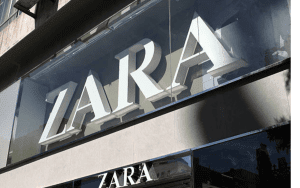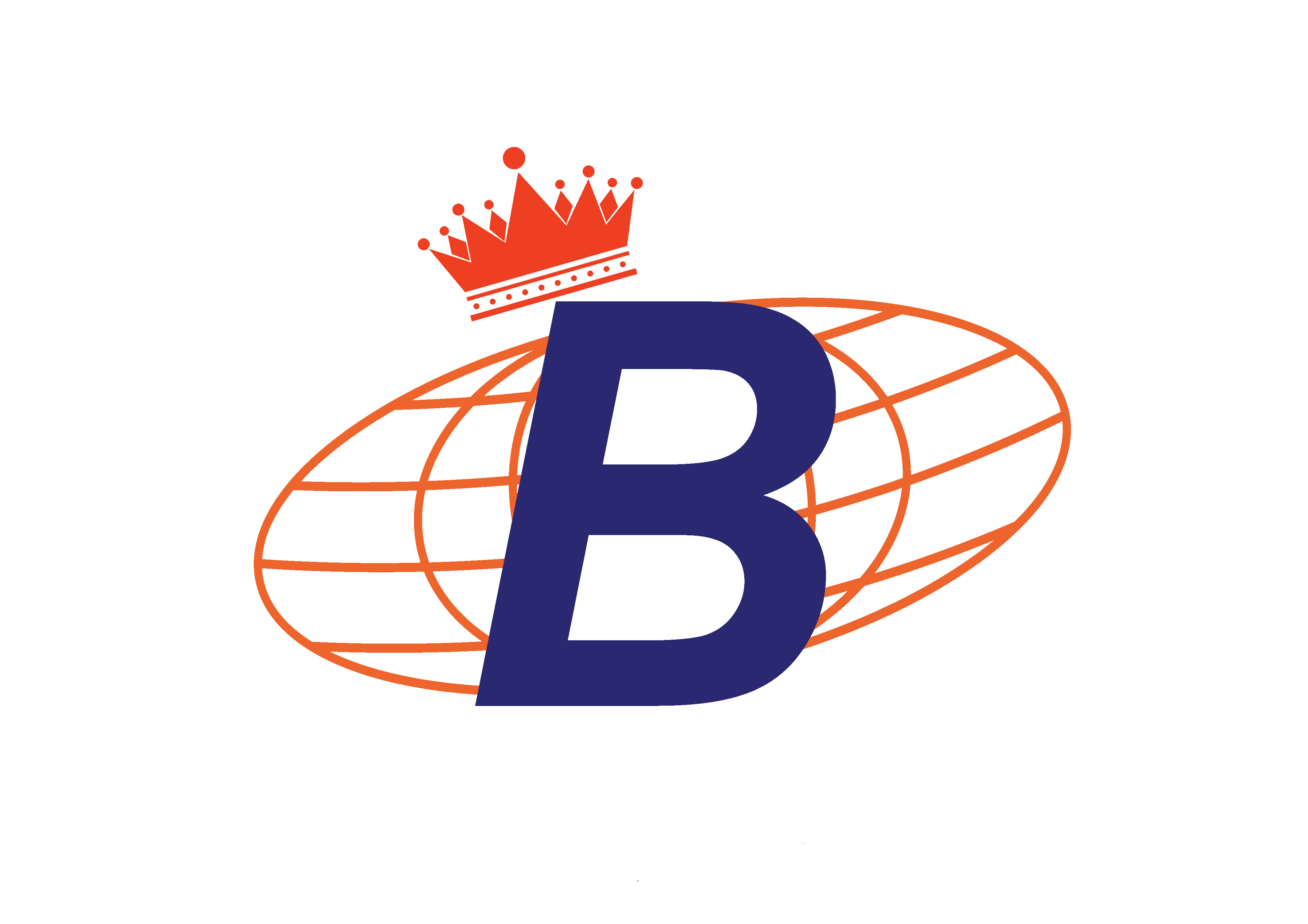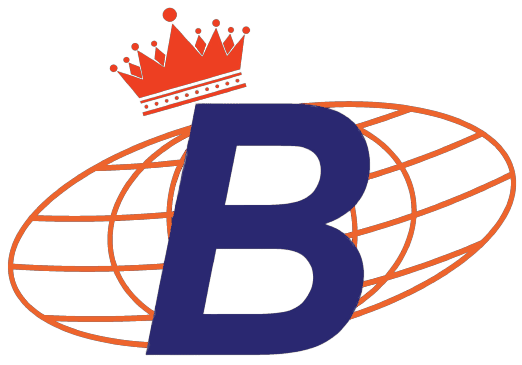World’s Largest Fashion Brand, ZARA Brand, A Spanish Company
 Introduction
Introduction
Fast-fashion business models and cutting-edge design and manufacturing are two of Zara brand many claims to fame. The company has gained acceptance in more than 90 countries. One must examine the company’s internal and external environments, competitive advantage, global entry strategies, and supply chain management to forecast Zara’s success.
Analyze the firm’s financial health, corporate citizenship, and ethical policies. This report applies applicable models and theories to evaluate Zara’s current standing and suggests the next steps for growth.
The report’s first two sections focus on Zara’s internal and external environment and competitive advantage. The objectives, methods, and overall business plan for Zara’s global expansion are then evaluated. In addition, we will provide the following:
- Recommendations for improving Zara’s supply chain.
- Increasing profits.
- Enhancing their corporate social responsibility initiatives.
Recommendations For Improving Zara’s Supply Chain.
This report analyzes Zara’s current situation, and suggestions for improvement are provided. Anyone curious about Zara’s global success in fashion retail will find this report informative.
Task 1; Use tools like PESTEL, SWOT, and Five Forces.
Zara’s external environment can be analyzed using tools like PESTEL, SWOT, and Five Forces. The political and economic, issues social, technology-related issues, environmental problems, and legal (PESTEL) factors affecting Zara’s operations are evaluated. There is an increasing emphasis on sustainability, ethical, and environmental issues among consumers, which presents challenges for the company.

When formulating its strategy, Zara must take into account these external factors. The SWOT analysis looks at the company from the inside out, analyzing its advantages and disadvantages and potential opportunities and threats. Zara can meet its customers’ needs and stay current with fashion trends thanks to its fast fashion business model.
Its reputation for providing stylish, well-made products at reasonable prices is also a strength. There are, however, limitations due to its reliance on Inditex and its need for a significant presence in emerging markets. The bargaining power of suppliers, customers, and competitors are just some of the factors taken into account by the “Five Forces” analysis.
Zara’s main rivals are fast fashion chains like H&M, Forever 21, and Uniqlo. Both suppliers and customers are becoming more price-conscious and demanding high-quality, environmentally friendly products, which challenges the company during negotiations.
Zara can gain a deeper understanding of its SWOT by evaluating its external and internal environment. This information allows the company to remain a global fashion industry leader and make informed strategic decisions.
The fast-fashion retailer Zara now has a significant advantage in the market. Many factors have contributed to Zara’s success. Internal and external factors. Zara’s competitiveness stems largely from internal factors like the company’s novel business model, skill, and forward-thinking approach to fashion. Because of its commitment to reasonably priced, on-trend clothing, Zara has become a worldwide phenomenon.
Due to its elegant nature, Zara can adapt quickly to shifting consumer tastes and fashion trends, ensuring its continued success. Zara’s success can be attributed to its forward-thinking fashion philosophy and cutting-edge tools like its in-house design team and e-commerce platform.
The competitive edge enjoyed by Zara can also be attributed to factors from the outside world. The company’s global presence, innovative products, and success in breaking into new markets are a few factors contributing to its continued success. With its efficient supply chain and robust supplier relationships, Zara has become more competitive and successful.
Furthermore, Zara’s dedication to environmental protection has set the company apart from its rivals. Thanks to this, a strong rapport has been established with customers increasingly concerned about environmental issues. Zara needs to play up its strengths if it wants to keep and expand its market share.
The company is taking a fresh approach to the fashion industry by focusing on innovation and streamlining its supply chain while also looking into emerging markets for future expansion.
Successful retailers like H&M and Uniqlo can be examples for the company. The achievements of Zara can be credited to both internal and external factors. Zara can keep and expand its market dominance by zeroing in on its core competencies and looking for new growth opportunities.
Second Objective: Strategy in a Global Context

The Spanish fast-fashion label Zara has consistently pushed the envelope for its competitors. The company’s operations have expanded internationally, serving customers in many countries.
Zara’s global expansion can only be comprehended by studying how other companies enter international markets using appropriate models. The Uppsala Model is one such framework; it analyses a company’s internal and external factors to determine its rate and pattern of internationalization.
The model highlights the company’s phased strategy for entering the foreign market and its gradual acquisition of familiarity with the target market. According to the Uppsala Model, Zara’s global expansion was fueled by a mix of internal capabilities like its unique supply chain management system and external factors like the expansion of the fashion industry.
The company has maintained its global competitive advantage thanks to its dedication to sustainable and ethical production practices and prompt delivering the latest fashion trends.
Zara’s international success is evidenced by the company’s foresight and ability to adjust to new markets and demographics. As it has expanded internationally, Zara has changed its business approach. By penetrating new markets, the firm has broadened its base of satisfied customers.
Furthermore, it has been able to leverage new supply chain networks, which has increased its efficiency and decreased its costs as a result of its global presence. These benefits have helped the company achieve financial success, allowing it to reinvest in its business and strengthen its brand.
Zara’s internal and external factors drove the company’s decision to expand internationally, which has had far-reaching effects on the fashion retailer’s overall strategy and ability to compete. The Uppsala Model is a helpful framework for analyzing the company’s entry into international markets and its subsequent effects on its business.

The fast-fashion powerhouse Zara can be found all over the world in the form of its ubiquitous brick-and-mortar locations in 96 different countries. Zara needs a well-thought-out and executed global entry strategy to maintain and grow its presence in the worldwide market.
Study after study shows that Zara can successfully enter and compete globally by employing various tactics. Zara may initiate market expansion. Using this method, established products are taken into untapped markets. Zara is well-positioned to expand thanks internationally to its strong reputation as a brand.
For instance, Zara can enter untapped markets in Africa and South America by opening a shop there. Zara’s global customer base and market share will grow thanks to this strategy. The product development strategy is Zara’s second option.
The goal of this tactic is to expand into new markets through the introduction of innovative new products. Zara’s extensive design and production resources will allow the company to create new product lines for the emerging market.
For countries with a rich cultural history, like India and China, Zara could create a collection of traditional garments. Partnerships are an option for Zara. A partnership with a domestic firm is recommended for breaking into a new market. By adopting this policy, Zara can share the risk with its local partner and take advantage of the latter’s familiarity with the market.
For instance, in countries like Russia, where the local partner has a solid foothold and familiarity with the market, Zara can form a joint venture with a local company. It’s worth noting that Zara can enter and compete successfully in the global market using these strategies; they are not mutually exclusive.
Companies like H&M, Nike, and Adidas, all of which exist, have succeeded with similar tactics. To be successful in the global market, Zara must carefully assess these strategies and make well-considered decisions.
A wast analysis of the external and internal environments informs Zara’s global entry strategies.
The research suggests that Zara should combine direct investment, licensing, and franchising as entry strategies into the global market. Establishing wholly-owned subsidiaries in other countries is a crucial part of the straightforward investment strategy. By taking this route, Zara can fully leverage its reputable brand and maintain control over its business.
Japanese clothing retailer Uniqlo, for instance, has taken a similar approach to breaking into the American market. For a fee, Zara may allow third parties to use its trademark, goods, and services under a license agreement.
This strategy helps Zara enter new markets rapidly while minimizing costs. Nike, for instance, has licensed its brand to companies in several different nations, including China. In exchange for royalties,
Zara may license its name, trademarks, and products through a franchise agreement to an independent businessperson. This strategy helps Zara expand into new markets with minimal investment and take advantage of franchisees’ knowledge of the ground.
McDonald’s, for one, has used franchising to successfully enter many international markets, such as Australia and India. Using a mix of these three entry strategies, Zara can strike a balance between control and flexibility, reduce financial risk, and expand its global presence.
Before deciding on an entry strategy, Zara needs to consider each potential market’s cultural, legal, and economic factors. In addition, Zara needs to ensure that its global entry strategies align with its overall business goals and objectives by constantly monitoring and evaluating its performance in each market.
ZARA Company Objective 3: Establish a Corporate Strategy

The Spanish fashion retailer Zara Fashion Valley has become widely admired worldwide for its ground-breaking approach to fashion and business. The company’s competitive advantage rests mainly on the strength of its supply chain management, which has contributed significantly to the company’s success.
In this analysis, we will examine Zara’s global supply chain and make recommendations for improvement. With more horizontal integration, Zara can strengthen its supply chain. The business collaborates with competitors. This would increase Zara’s access to materials, tools, and knowledge.
Spanish fashion retailer Zara Fashion Valley, for instance, has partnered with other fashion businesses to leverage their supply chain knowledge and resources. Vertical integration is another tactic Zara can employ. To achieve this goal, the company must integrate its operations with its suppliers and customers.
Retail giant Zara, for instance, has upgraded its supply chain with cutting-edge tools like automated warehouses and digital inventory management systems. The result has been shorter production times and greater efficiency in the factory.
Zara would likely see significant improvements if it outsources its supply chain. Some of the company’s tasks are contracted out to logistics and production firms.
Spanish fashion retailer Zara Fashion Valley can cut costs, and expand into new markets by outsourcing some of its operations. Zara, for one, has moved some of its manufacturing to Asia and Eastern Europe, where it can take advantage of cheaper labour and materials.
Incorporating strategic partnerships into Zara’s supply chain could yield positive results. The company collaborates with similar businesses to pool resources and share knowledge. As an illustration of this, Zara has joined forces with its suppliers to create new products and pool their respective resources. Because of this, the business has been able to boost its supply chain efficiency and become more competitive.
ZARA Brand and Every business is looking for ways to Boost Profits and Maintain Competitiveness.
As a significant player in the fashion industry, Zara is not an outlier. Zara can increase its earnings by using various models and frameworks to enhance its operations and sell more products. The Porter Five Forces Model validates the fashion retailer Zara to increase its bottom line.
A company’s competitiveness in its industry can be evaluated using this model, which considers five factors: The competitive dynamics within an industry are influenced by several elements, including as the potential danger posed by new entrants, the level of negotiation power held by suppliers, the bargaining power wielded by customers, the possibility of alternative goods emerging, and the degree of competition among existing competitors.
By evaluating these elements, Zara can fine-tune its business strategy to better compete in the market and boost profits.
The Value Chain Analysis isanother framework, that can help Zara grow its bottom line. This model provides a structure for examining a business’s many steps to bring a product to market. Zara can increase its profitability by analyzing its supply chain activities to find places to boost efficiency and cut costs.
Zara may want to hire outside help for some of its operations to cut costs and boost productivity. Zara can also increase profits through several other avenues, including diversifying its product offering, streamlining its supply chain, and enhancing customer service.
The company may also investigate entering new markets by forming strategic partnerships, joint ventures, or acquiring complementary businesses.
Spanish fashion retailer Zara Fashion Valley can take a phased approach to implementation, beginning with internal improvements like streamlining operations, improving supply chain efficiency, and elevating customer satisfaction.
The business can then shift its attention to entering new markets where it can capitalize on the existing strength of its brand and the loyalty of its customer base to drive even more revenue and profit.
Finally, Zara has data analytics and market research tools to track its performance and make necessary course corrections. Zara can increase its profits and maintain its leadership position in the fast-fashion market by adopting the earlier recommendations and regularly analyzing its operations.
Strategic Objective #4:
ZARA Brand Believes in Ethics and Corporate Social Responsibility

Theory-based frameworks applicable to Spanish fashion retailer Zara’s CSR strategy can be used for analysis and evaluation. Freeman’s CSR (Corporate Social Responsibility) Pyramid is an example of such a model (1984).
Economic, legal, ethical, and philanthropic responsibilities make up the four tiers of the corporate social responsibility pyramid. This model provides criteria by which to assess a company’s involvement in environmental and social causes.
Zara’s corporate social responsibility plan prioritizes environmental friendliness and moral business procedures. This includes adopting energy-efficient systems and reducing waste to lessen its environmental impact.
Fair Labour Practices and Health and Safety Regulations,
Are just two examples of the standards for working conditions outlined in the company’s code of conduct. These actions show that Zara is serious about being a good corporate citizen by adhering to all applicable laws and standards of conduct.
Zara contributes to several humanitarian causes, including funding for schools in underdeveloped countries and aid for victims of natural disasters. These charitable efforts show that Zara is serious about making a difference in people’s lives and protecting the environment.
Other Fashion Companies have Improved their CSR Practices,
Similarly to Zara. For instance, H&M has implemented a closed-loop system for clothing production and aims to be completely circular and climate positive by 2030. This exemplifies H&M’s efforts to fulfil its environmental obligations and lessen its impact on the planet.
Regarding economic, legal, ethical, and philanthropic commitments, Zara has implemented its CSR strategy. Zara demonstrates its dedication to being a socially responsible company through its commitment to improving its sustainability and ethical practices. More study is warranted to evaluate the efficacy of Zara’s CSR strategy and locate growth opportunities.
The Spanish Clothing Retailer Zara Fashion Valley Faces Stiff Competition in an International Market.
As a result, it has to deal with a wide range of ethical challenges that threaten its business as a familiar, good name, and bottom line. These problems can only be found by applying ethical theories and models to the company’s business practices, policies, and decisions.
Zara needs to work on ethics regarding workers’ rights and working conditions. Much of the company’s clothing is made in developing countries, and its factories there have been criticized for their treatment of workers and the low wages they pay.
Sweatshop labour is a primary ethical concern in the fashion industry, and Zara is not immune to the problem. The Fair Labor Association has accused Zara’s factories in Bangladesh, India, and Turkey of breaking multiple labour laws (FLA, 2013). Zara has an ethical dilemma regarding the preservation of natural resources.
Zara Brand has been Criticized for Being a Fast Fashion Retailer;
adding to the world’s waste problem and resource depletion.
The organization must reduce its operations’ environmental impact and carbon footprint. Zara, for instance, has received criticism for its use of synthetic materials and high-volume clothing production that leads to waste.
As a result, this may have severe consequences for the planet, particularly in the form of increased emissions of greenhouse gases and diminished supplies of natural resources (Newman, 2019). Others have complained that Zara’s ads normalize an unrealistic ideal of beauty and exploit the models who appear in them.
The company, for instance, has been criticized for promoting unhealthy beauty standards by using underweight models in their advertisements (Bivens, 2016). This is a moral dilemma because it may harm the company’s customers, especially young women, and their sense of self-worth and mental health.
Several ethical concerns threaten Zara’s business standing, daily operations, and bottom line. Worker protections, ecological integrity, advertising methods, how we feel about our bodies, and other related concerns are all on the list.
The company must implement responsible business practices, policies, and decisions to address these concerns. To achieve this goal, Zara should evaluate its operations consistently and work to align its methods with ethical principles and policies. Zara should also commit to constant development and implement environmentally and socially responsible business practices.
Conclusion
The study covered Zara’s internal and external environments, competitive advantage, reasons for global expansion, global entry strategies, supply chain operations, profitability, CSR strategy, and ethical issues. A
ccording to the data, Zara is ahead of the competition thanks to the company’s distinguished reputation, cutting-edge styles, and rapid-fire business practices in the fashion industry.
The company actively seeks new markets and market share through its global expansion. Zara can enter and compete in international markets through joint ventures, franchises, and wholly-owned subsidiaries.
Supply chain effectiveness and cost savings can be improved through horizontal and vertical integration, outsourcing, and strategic alliances. Zara should cut production costs, broaden their product offering, and launch their products online to increase their profits.
Sustainability, social responsibility, and ethics should be prominent in the company’s CSR strategy, which should serve the company’s business objectives. Fair labour practices, environmental sustainability, and animal welfare are all areas where Zara can improve its image and attract more moral consumers. These results and suggestions provide Zara with a road map for enhancing operations and achieving global success.
For more details click here,




